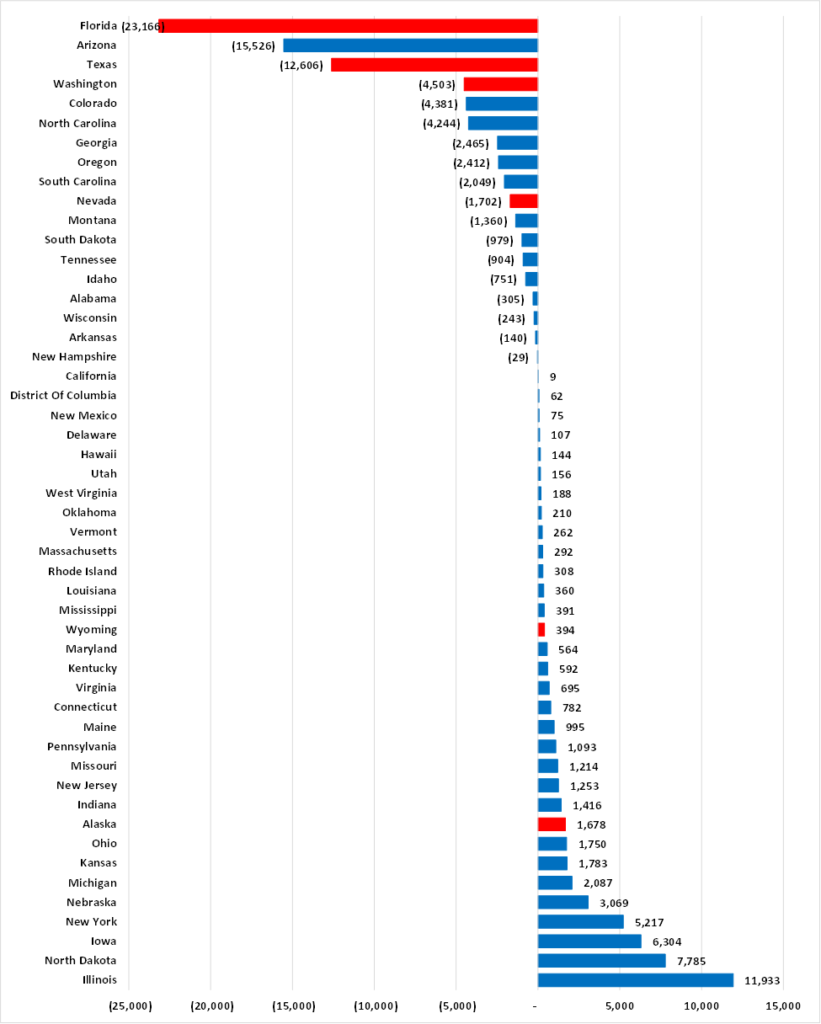Since 2011, Minnesota has lost 41,000 residents on net to states without an income tax
This week, I’ve noted that the seven states states without a state income tax – Alaska, Florida, Nevada, South Dakota, Texas, Washington, and Wyoming – have accounted for disproportionate shares of Gross Domestic Product growth and employment growth in recent years. The same goes for population growth.
In 2010, these seven states accounted for 18% of the total population of the United States; in 2019, they accounted for 19%. In other words, over those years population grew faster, on average, in states without a state income tax than in states with a state income tax.
Indeed, as Figure 1 shows, states without a state income tax – which accounted for 18% of the total population of the United States in 2010 – accounted for 36% of total population growth in the United States between 2010 and 2019.
Figure 1: 2010 population and 2010 to 2019 population growth, United States

This is, in part, because states with no income tax attract migrants, on net, from other states, and one of those states is Minnesota.
Figure 2 uses IRS data that shows where those residents who have left Minnesota to move elsewhere in the United States have gone to.
Figure 2: Net domestic migration in and out of Minnesota, 2011-2012 to 2019-2020

It shows that, from 2011-2012 to 2019-2020, Minnesota lost, on net, 40,884 residents to states without an income tax, with Florida the top destination. By contrast, our state gained residents from states with income taxes, with Illinois – another high tax state – being the leading source of domestic migrants.
People never vote more meaningfully than when they vote with their feet and when Minnesotans do so they opt, disproportionately, for states without an income tax. I do not deny that abolishing the income tax in our state would be a significant undertaking, but the end point would seem to be an attractive to many Minnesotans.